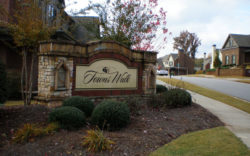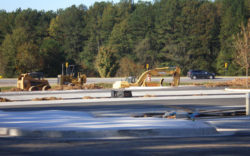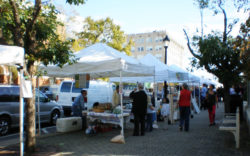It doesn’t take a long road trip to see: massive clear-cutting and construction equipment amid large tracts of forest or family farms. Often, surrounding development increases a landowner’s property taxes until he is forced to sell. But there is a solution.
Through a land trust agreement one can preserve an area with a unique ecological feature: a natural forest, a managed forest or small-scale farm. Perhaps a land-rich, cash-poor farmer would like to continue to live in the family home in its original pastoral setting while continuing to farm. Or maybe the landholder would like to see the family homestead preserved for its historic or even sentimental value. The answer is a conservation easement, an agreement in which the current owner of a property forever waives all development rights on the land in exchange for lower property taxes.
Each conservation easement is different: some allow for minor development such as trails, ponds or farm structures; others ban any building. The owner must maintain the property in a specified manner, such as picking up litter, while another organization is responsible for ensuring the property is properly managed according to the agreement.
Organizations like the Athens Land Trust and the Oconee River Land Trust evaluate the property’s conservation values—such as proximity to streams and rivers, road buffering and rare species’ habitats—design a conservation management plan to protect them and monitor and enforce this plan.
You can’t just decide to place a conservation easement on your residential property in your typical neighborhood. The land must have an ecological, cultural or historical feature worth preserving. Other factors to consider are what the land is surrounded by; road buffers reduce noise and improve the aesthetic appeal. Some plots offer educational or recreational benefits to nearby residents.
One example is Five Acre Woods, located off Northside Drive off North Avenue. When this plot was threatened with development, the Over the River Neighborhood Association banded together to place a conservation easement over the land. Athens-Clarke County purchased the property through the Georgia GreenSpace Program, and while the county still owns the land, the homeowners’ association is responsible for maintaining it.
The Athens Land Trust, assisted by students and professors from the University of Georgia College of Environment and Design and Horticulture, the Athens Community Tree Council and the ACC community forester, has overseen the maintenance and improvement of the forest. Volunteers have removed invasive species, planted native shrubs donated by the State Botanical Garden and maintained trails.
The area offers Athenians an escape into a natural haven with a chance to enjoy trail walking, bird watching and other outdoor activities surrounded by indigenous flora and fauna. Living in Athens, where we’re only a quick drive away from country and farmland, it’s easy to forget that Athens is, in fact, an urban area, which makes Five Acre Woods an especially attractive forest. Five Acre Woods breaks the monotony of student housing and commercial development characteristic of North Avenue. In the middle of a busy day, I relish the opportunity to quickly pop into a natural reserve and enjoy something not man-made.
We often don’t realize it, but areas like Five Acre Woods provide our community with so many benefits. They remove pollution, improve air and water quality, provide a habitat for flower pollinators and fight climate change, and they’re beautiful. Five Acre Woods generates $12,410 a year in ecological and aesthetic value, using figures from a study by UGA’s Warnell School of Forest Resources. And Athens receives these benefits simply by preserving the land. What a deal!
When the value of conserved acreage is quantified like this, it’s easy to see why we should preserve it from an economic standpoint. Of course, there are numerous other benefits not accounted for in these studies, such as educational value or indigenous peoples’ value of the land.
This exact concept of quantifying the value of untouched land or managed forest is used elsewhere in the world to create a carbon credit market. So, in areas like South America where deforestation contributes to greenhouse gas emissions, companies can buy “carbon credits” that are used to purchase development rights from the land, offsetting the company’s greenhouse gas emissions. The amount of pollution that isn’t released is calculated after surveying the land and comparing it to a similar, adjacent property where development rights are not being used for carbon credits.
While Five Acre Woods’ value won’t be sold, it is interesting to view conservation in terms of monetary value. Also, it is a strange realization that development rights actually exist and are something that is not necessarily attached to land.
Next time you’re in the neighborhood, pop into Five Acre Woods for a stroll around the 1.5 mile trail loop. No rush, though. This forest will be protected forever.
Like what you just read? Support Flagpole by making a donation today. Every dollar you give helps fund our ongoing mission to provide Athens with quality, independent journalism.










